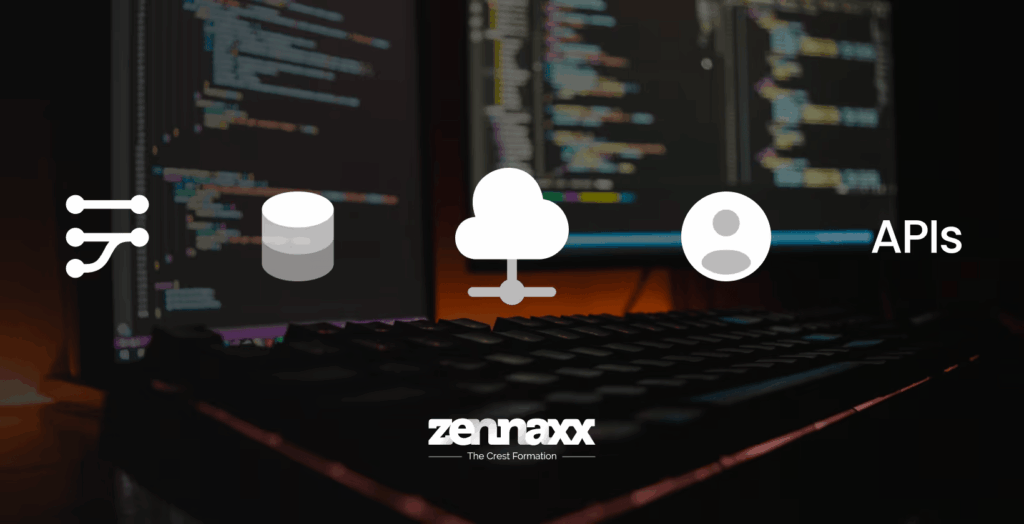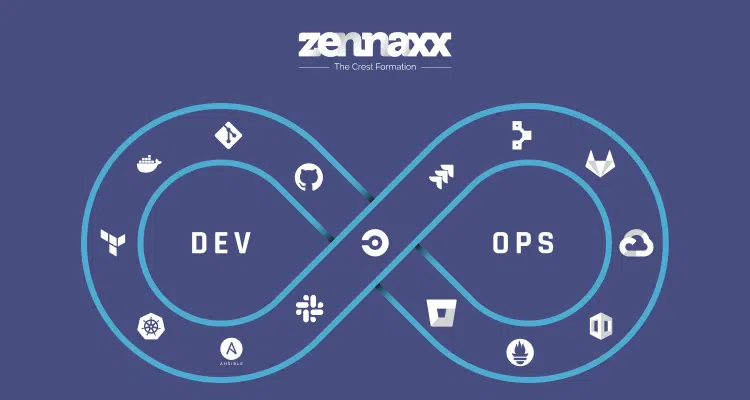
When you launch a web application, initial traffic is usually manageable and small. However, as your business expands and reaches more customers, the load on your web application grows simply due to the fact that more individuals are accessing it. In such scenarios, you shouldn’t let your web application crash.
The simple solution for this is to develop scalable applications. Whether it is 100 users or 100,000 users, scalable applications provide the same performance every time and smoothly.
This blog gives you actionable information on how to build such scalable apps, how to overcome challenges that come up while building a scalable application, and how a development partner can help.
Why Application Scalability Is A Must-Have for Businesses?
Handle growth without any hindrance
Deliver an Exceptional Customer Experience
Stay Agile and Adapt to Change
The market is always shifting, hence new competitors can emerge in a blink, and a totally new competition can be a reason for your great loss. Imagine having a non-scalable application that cannot adapt to the market changes, and your application will be thrown out of the competition in a matter of time. Scalable apps do not come with system constraints. So, you can easily introduce a new module or expand to new markets without altering everything from top to bottom.
Boost Cost Efficiency
You can see that when an application is built with scalable features, it can dynamically adjust resources like infrastructure, servers, etc., according to user demands. Overall, it significantly benefits your application to use optimal resources and enhances profit margins.
How to Build a Scalable Web Application?

Structuring Your Code for Growth
- Design Your Code in individual components: Split functionality into modules or microservices so that you can achieve a modular design for your application build. You must follow the principle that each service you provide in the application must focus on one task. Therefore, you can deploy or scale it independently. For example, you can take all kinds of payments or authentication techniques as individual services.
- Avoid code duplication: Remember the DRY (Don’t Repeat Yourself) principle and create shared libraries or utility functions. A clean codebase with well-defined modules makes parts of code reusable. It helps you update fast without introducing new errors.
- Better Version Control:Maintaining proper versions allows you to roll back if some feature isn’t working. You can use Git or similar systems to track and manage changes in the codebase.
- Enforce Consistent Code Style: These are the techniques that can especially help you in creating style guides and code writing in proper format, which enables a similar code structure among the whole team. It greatly reduces bugs in large projects.
Optimizing Databases for Scale
- Choose the Right Database: For every project, the database needs vary. To store structured data, you can use MySQL or PostgreSQL relational databases. But let’s say if you have unstructured data, you must use NoSQL databases like MongoDB, Cassandra, or DynamoDB. You can also follow a hybrid setup where you combine SQL and NoSQL (polyglot persistence).
- Use Indexing and Smart Queries: Proper indexing lowers query times considerably. Often, expensive joins, nested subqueries, or poor indexing can slow down an entire application.
- Bring Horizontal Scaling:For relational, you must offer read replicas to aid reporting and queries. For NoSQL, you can use sharding to distribute data across different servers for load balancing.
- Implement Caching: You can implement caching layers (Redis, Memcached) to keep frequently used results in memory. This speeds up responses.
- Use Connection Pooling: Manage database connections with pooling tools. This avoids resource depletion in spikes.
- Have a Backup and Recovery Plan: Implement automated backup processes with defined RTO and RPO. This is a must-have for scalable environments.
Scaling the Backend and APIs
- Create Stateless APIs: A good practice is to keep the APIs stateless on the server side. The state is carried with each request, thus making horizontal scaling simpler.
- Use Load Balancers: Requests coming in can be distributed amongst multiple servers for an equal spread via load balancers. This will prevent servers from getting overloaded and will help in fault tolerance.
- Add Rate Limiting:You can also limit the number of incoming requests from a particular user or client to avoid API misuse or accidental overload.
- Go Serverless: Practice AWS Lambda, Azure Functions, or Google Cloud Functions, which can trigger workloads based on their different events.
- Process Asynchronously: Carry out lengthy operations in the background with the help of several task queues (RabbitMQ, Kafka, SQS). This ensures there are no blocked API calls.
- Use multiple API Gateways: Employ gateways (Kong, AWS API Gateway, Apigee) to manage authentication, rate limit, log, and route traffic.
CI/CD for Continuous Delivery
- Automate Your Testing: What you can do here is encapsulate complete code with unit, integration, and end-to-end tests for automated testing and bug finding before production.
- CI/CD Tools: You can take help of various CI/CD platforms like Travis CI, GitHub Actions, Jenkins, or GitLab CI/CD. Using these, you can automate builds, tests, and deployments.
- Perform Deployment on a Rolling Basis:For new updates, roll them out in batches. In case you wonder how the update fails, you can easily roll back to the previous running model without destroying the whole production.
- Try Blue-Green Deployments: Having two environments running at the same time can help you a lot in deploying, where one is active, and one is a standby.
Frontend Performance at Scale
- Break Down Your Code: It is a process of breaking down code into independent modules.
- Lazy Load Images and Assets: Load all below-the-fold images and other non-prioritized assets only when the user wants to see them or scrolls.
- Compress Your Big Files:Compress CSS, JavaScript, and HTML files using Gzip or Brotli. A lesser weight always gives a faster loading time.
- Leverage a Content Delivery Network (CDN): Keep static assets on edge servers near users. The purpose of CDN is to minimize latency and burst traffic throttle.
- Optimize Images: Use modern formats (WebP, AVIF) and responsive images. Tailor images to display according to device type.
- Preload and Prefetch: Load essential resources ahead of time and prefetch likely next pages in advance for “waitless” experiences.
Security at Scale
- Encrypt All Traffic (HTTPS): The first step to security starts with encryption. Encrypt all traffic to avoid eavesdropping.
- Use Secure Authentication: Implement JWT or OAuth2 for stateless secure authentication.
- Store Credentials Safely:Store credentials, API keys, and secrets in environment variables or secret managers.
- Conduct Regular Audits: Do vulnerability scanning and penetration testing using tools like OWASP ZAP or Burp Suite.
- Limit Access: Apply least privilege for databases, APIs, and internal services. Limit access to only what is required.
Monitoring and Logging
- Application Performance Monitoring (APM): There are several platforms, like Datadog, New Relic, or AppDynamics, which can give you real-time insights into application well-being.
- Centralize Your Logs: Have a more professional environment by collecting microservices logs with the help of ELK Stack, Logstash, or AWS CloudWatch.
- Track Your Errors:Employ Sentry, Rollbar, or Honeybadger to track crashes and exceptions in real-time.
- Monitor Your Infrastructure: It’s always good to monitor CPU, memory, disk, and network usage with Prometheus, Grafana, or cloud-native tools.
- Synthetic Monitoring: You can pre-test your whole deployment environment and all kinds of user experience with the tool, like Pingdom, so that you can know if anything goes wrong.
Challenges in Developing Scalable Web Applications
- Dealing with Monoliths: Scalable apps have an interconnected monolithic design. So, scaling one feature may force you to make changes in several modules. This can make updates slower and riskier.
- Overcoming Data bottlenecks: Database queries, writes, and joins slow down when traffic or data volume goes up. Databases with poor indexing or schema design can make this even more of an issue. Without a proper plan, the data layer may become a weak link.
- Handling Third-party dependencies:Payment gateways, APIs, and analytics tools can introduce new points of failure when you add new features that challenge compatibility. It may cause application crashes.
- Managing Operational Complexity: Scaling sometimes involves expanding the entire infrastructure. This means more servers, more pipelines, and more services, which can become error-prone. CI/CD pipelines and infrastructure as code automation can help minimize this challenge.
- Prevent Cost Overruns: Scaling is expensive. As you invest more in resources, take additional care to ensure optimal resource utilization.
Why Zennaxx Is the Right Partner for Building Scalable Applications

Ultimately, our goal is simple: to help you achieve your best ideas in a successful deployment production. We understand how important it is to give your users the best experience possible with seamless performance and a loyalty that binds us all together.
FAQs
- Why is modularity important for scaling? Modularity allows you to split your app into independent components. For example, user logins or payments can be separate modules. So, you can work on building one module without affecting other parts of the code.
- What is the best database for a scalable app? The choice of database depends on your project. Look at what type of data is mostly used in the app. When it’s structured data, MySQL or Postgres makes more sense. On the other hand, for unstructured data, choose MongoDB or NoSQL.
- How do I ensure that my app doesn’t crash during traffic spikes? When you expect more traffic, use load balancers to distribute the traffic. Auto-scaling tools like AWS Lambda serve this purpose. For ex ample, during a viral campaign, you can set these up to handle more incoming traffic.
- Why is CI/CD important for scaling? CI/CD is mainly useful for automated deployments. Developers can keep pushing new features without breaking the app with a properly implemented CI/CD pipeline. GitHub Actions can streamline this.


